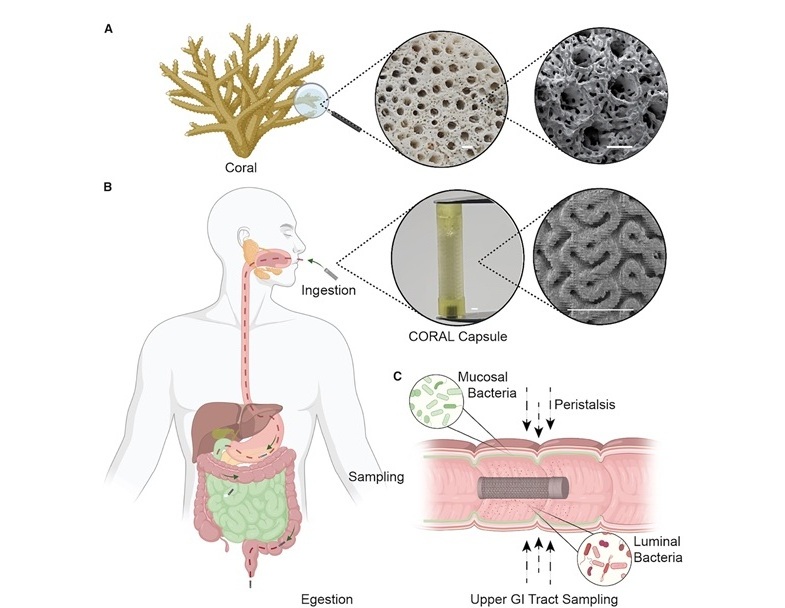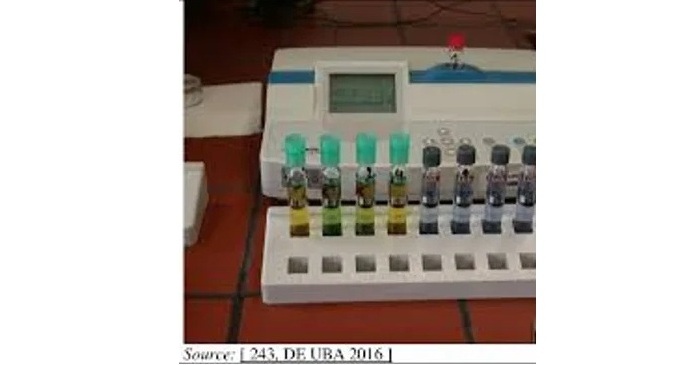Rare Kidney Cancer Marked by Molecular Features
|
By LabMedica International staff writers Posted on 19 May 2020 |
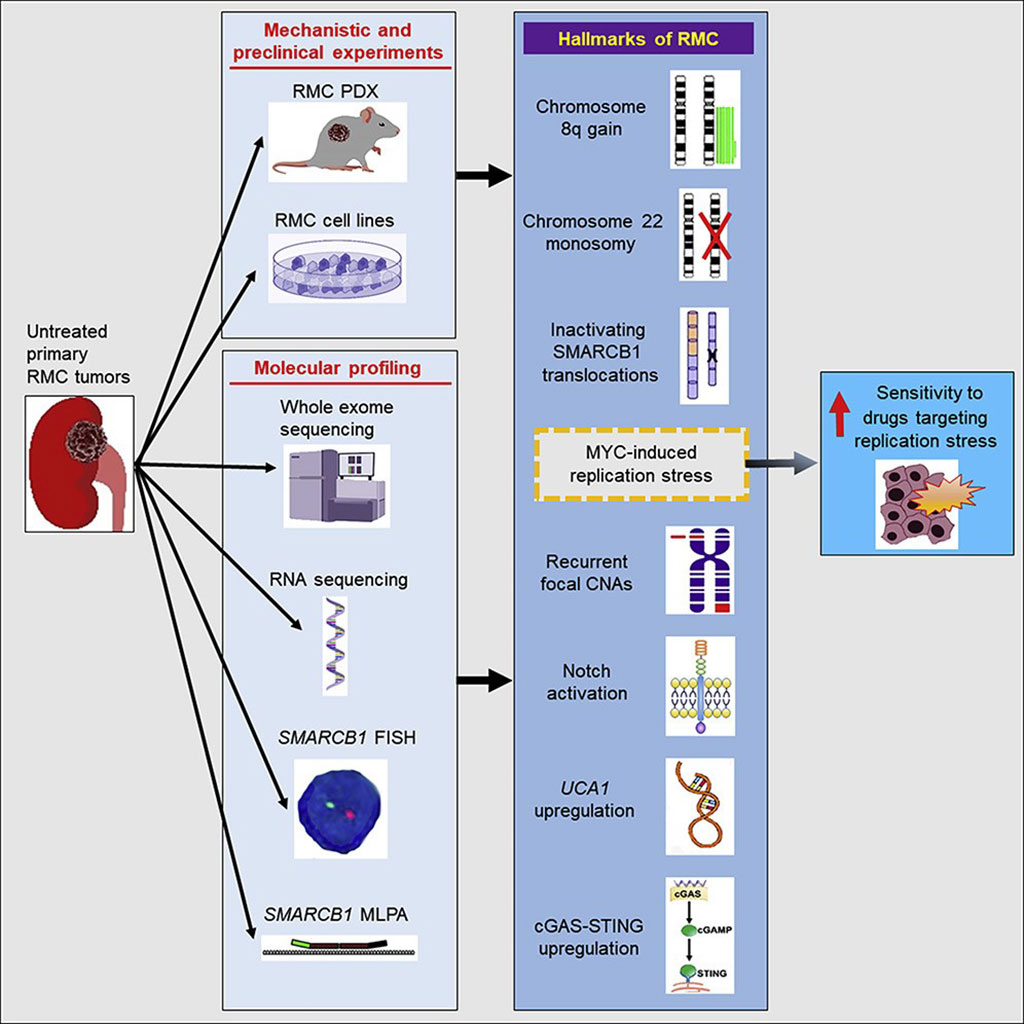
Image: Schematic diagram of Molecular Characterization Identifying Distinct Molecular Hallmarks of Renal Medullary Carcinoma (Photo courtesy of University of Texas MD Anderson Cancer Center).
Renal medullary carcinoma is a rare cancer of the kidney that predominantly afflicts young people of African descent who carry the sickle cell trait, sickle cell disease, or other sickle hemoglobinopathies that can cause sickling of the red blood cells.
Rare renal medullary carcinoma kidney cancers are marked by frequent focal chromosomal changes and other mutations that may inform future treatment strategies and renal medullary carcinoma (RMC) is a highly lethal malignancy. Men are twice as likely to be affected by RMC as women, and about 70% of RMC cases start from the right kidney.
A large team of medical scientists from the University of Texas MD Anderson Cancer Center (Houston, TX, USA), and other centers in the USA and France used a combination of exome sequencing, RNA sequencing, fluorescence in situ hybridization (FISH), and multiplex ligation-dependent probe amplification (MLPA) analyses, and assessed 31 untreated renal medullary carcinoma tumors and 15 matched normal samples, identifying several recurrent copy number changes in the kidney cancers, from chromosome 8 gains and chromosome 22 losses to upregulated Notch signaling- and innate immune-related pathways.
In general, the team's results revealed recurrent copy number changes falling at focal chromosomal sites, and chromosome sites prone to structural changes in individuals with sickle cell blood traits. Such findings might help to explain why renal medullary carcinoma diagnoses are more frequent in individuals with the sickle cell trait, the authors noted. The kidney cancer is also over-represented in younger individuals with African ancestry.
In contrast to the low number of focal copy number alterations (CNAs) found in malignant rhabdoid tumors (MRT) and atypical teratoid/rhabdoid tumors (ATRT), the authors said they found that renal medullary carcinoma harbors a much more complex genome with high levels of focal CNAs. They also found that the tumors tended to have enhanced DNA replication stress related to SMARCB1 mutations. The replication stress not only contributed to the focal copy number changes, the investigators suggested, but also seemed to increase activity by the MYC signaling pathway, producing tumors predicted to be more apt to respond to DNA-damage repair-targeting drugs.
The authors concluded that they had identified the importance of SMARCB1 loss as a major recurrent genetic alteration in renal medullary carcinoma and found that it confers replication stress-induced vulnerabilities that can be therapeutically targeted. These results highlight a potential opportunity to utilize agents targeting replication stress pathways alone or in combination with other therapies to yield deep and durable therapeutic responses. The study was published on April 30, 2020 in the journal Cancer Cell.
Related Links:
University of Texas MD Anderson Cancer Center
Rare renal medullary carcinoma kidney cancers are marked by frequent focal chromosomal changes and other mutations that may inform future treatment strategies and renal medullary carcinoma (RMC) is a highly lethal malignancy. Men are twice as likely to be affected by RMC as women, and about 70% of RMC cases start from the right kidney.
A large team of medical scientists from the University of Texas MD Anderson Cancer Center (Houston, TX, USA), and other centers in the USA and France used a combination of exome sequencing, RNA sequencing, fluorescence in situ hybridization (FISH), and multiplex ligation-dependent probe amplification (MLPA) analyses, and assessed 31 untreated renal medullary carcinoma tumors and 15 matched normal samples, identifying several recurrent copy number changes in the kidney cancers, from chromosome 8 gains and chromosome 22 losses to upregulated Notch signaling- and innate immune-related pathways.
In general, the team's results revealed recurrent copy number changes falling at focal chromosomal sites, and chromosome sites prone to structural changes in individuals with sickle cell blood traits. Such findings might help to explain why renal medullary carcinoma diagnoses are more frequent in individuals with the sickle cell trait, the authors noted. The kidney cancer is also over-represented in younger individuals with African ancestry.
In contrast to the low number of focal copy number alterations (CNAs) found in malignant rhabdoid tumors (MRT) and atypical teratoid/rhabdoid tumors (ATRT), the authors said they found that renal medullary carcinoma harbors a much more complex genome with high levels of focal CNAs. They also found that the tumors tended to have enhanced DNA replication stress related to SMARCB1 mutations. The replication stress not only contributed to the focal copy number changes, the investigators suggested, but also seemed to increase activity by the MYC signaling pathway, producing tumors predicted to be more apt to respond to DNA-damage repair-targeting drugs.
The authors concluded that they had identified the importance of SMARCB1 loss as a major recurrent genetic alteration in renal medullary carcinoma and found that it confers replication stress-induced vulnerabilities that can be therapeutically targeted. These results highlight a potential opportunity to utilize agents targeting replication stress pathways alone or in combination with other therapies to yield deep and durable therapeutic responses. The study was published on April 30, 2020 in the journal Cancer Cell.
Related Links:
University of Texas MD Anderson Cancer Center
Latest Pathology News
- AI Tool Detects Hidden Warning Signs of Disease Inside Single Cells
- Automated Tool Detects Early Warning Signs of Breast Cancer
- New Software Tool Improves Analysis of Complex Spatial Data from Tissues
- AI Tool Helps Surgeons Distinguish Aggressive Glioblastoma from Other Brain Cancers in Real-Time
- New Tool Could Revolutionize Acute Leukemia Diagnosis
- New Microscope Promises to Speed Up Medical Diagnostics
- ESR Testing Breakthrough Extends Blood Sample Stability from 4 to 28 Hours
- Accurate Pathological Analysis Improves Treatment Outcomes for Adult Fibrosarcoma
- Clinicopathologic Study Supports Exclusion of Cervical Serous Carcinoma from WHO Classification
- Mobile-Compatible AI-Powered System to Revolutionize Malaria Diagnosis
- Compact AI-Powered Microscope Enables Rapid Cost-Effective Cancer Scoring
- New Method Enables Precise Detection of Nanoplastics in Body
- AI-Powered Tool Improves Cancer Tissue Analysis
- AI Platform Uses 3D Visualization to Reveal Disease Biomarkers in Multiomics Data
- AI Tool Detects Early Signs of Blood Mutations Linked to Cancer and Heart Disease
- Multi-Omics AI Model Improves Preterm Birth Prediction Accuracy
Channels
Clinical Chemistry
view channel
VOCs Show Promise for Early Multi-Cancer Detection
Early cancer detection is critical to improving survival rates, but most current screening methods focus on individual cancer types and often involve invasive procedures. This makes it difficult to identify... Read more
Portable Raman Spectroscopy Offers Cost-Effective Kidney Disease Diagnosis at POC
Kidney disease is typically diagnosed through blood or urine tests, often when patients present with symptoms such as blood in urine, shortness of breath, or weight loss. While these tests are common,... Read moreHematology
view channel
Viscoelastic Testing Could Improve Treatment of Maternal Hemorrhage
Postpartum hemorrhage, severe bleeding after childbirth, remains one of the leading causes of maternal mortality worldwide, yet many of these deaths are preventable. Standard care can be hindered by delays... Read more
Pioneering Model Measures Radiation Exposure in Blood for Precise Cancer Treatments
Scientists have long focused on protecting organs near tumors during radiotherapy, but blood — a vital, circulating tissue — has largely been excluded from dose calculations. Each blood cell passing through... Read more
Platelets Could Improve Early and Minimally Invasive Detection of Cancer
Platelets are widely recognized for their role in blood clotting and scab formation, but they also play a crucial role in immune defense by detecting pathogens and recruiting immune cells.... Read more
Portable and Disposable Device Obtains Platelet-Rich Plasma Without Complex Equipment
Platelet-rich plasma (PRP) plays a crucial role in regenerative medicine due to its ability to accelerate healing and repair tissue. However, obtaining PRP traditionally requires expensive centrifugation... Read moreImmunology
view channel
Luminescent Probe Measures Immune Cell Activity in Real Time
The human immune system plays a vital role in defending against disease, but its activity must be precisely monitored to ensure effective treatment in cancer therapy, autoimmune disorders, and organ transplants.... Read more
Blood-Based Immune Cell Signatures Could Guide Treatment Decisions for Critically Ill Patients
When a patient enters the emergency department in critical condition, clinicians must rapidly decide whether the patient has an infection, whether it is bacterial or viral, and whether immediate treatment... Read more
Novel Tool Predicts Most Effective Multiple Sclerosis Medication for Patients
Multiple sclerosis (MS) is a chronic autoimmune and degenerative neurological disease that affects the central nervous system, leading to motor, cognitive, and mental impairments. Symptoms can include... Read more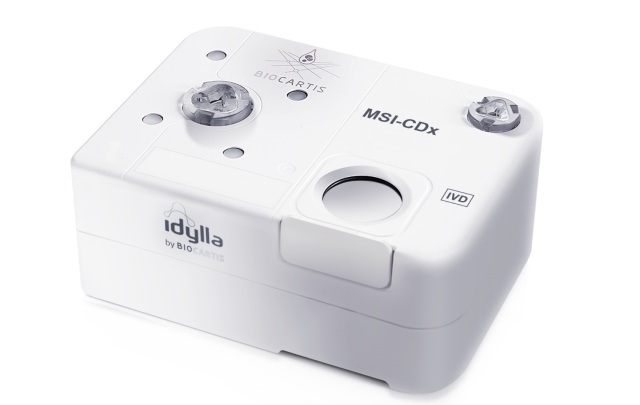
Companion Diagnostic Test for CRC Patients Identifies Eligible Treatment Population
Colorectal cancer remains one of the leading causes of cancer-related deaths worldwide, and identifying which patients will benefit most from targeted immunotherapies is critical. Existing diagnostic methods... Read moreMicrobiology
view channel
Fast Noninvasive Bedside Test Uses Sugar Fingerprint to Detect Fungal Infections
Candida bloodstream infections are a growing global health threat, causing an estimated 6 million cases and 3.8 million deaths annually. Hospitals are particularly vulnerable, as weakened patients after... Read more
Rapid Sepsis Diagnostic Device to Enable Personalized Critical Care for ICU Patients
Sepsis is a life-threatening condition that occurs when the body’s response to infection spirals out of control, damaging organs and leading to critical illness. Patients often arrive at intensive care... Read morePathology
view channel
AI Tool Detects Hidden Warning Signs of Disease Inside Single Cells
Detecting early signs of disease at the cellular level remains a major challenge in medicine. Subtle molecular changes often precede visible symptoms, yet these early indicators are difficult to detect... Read more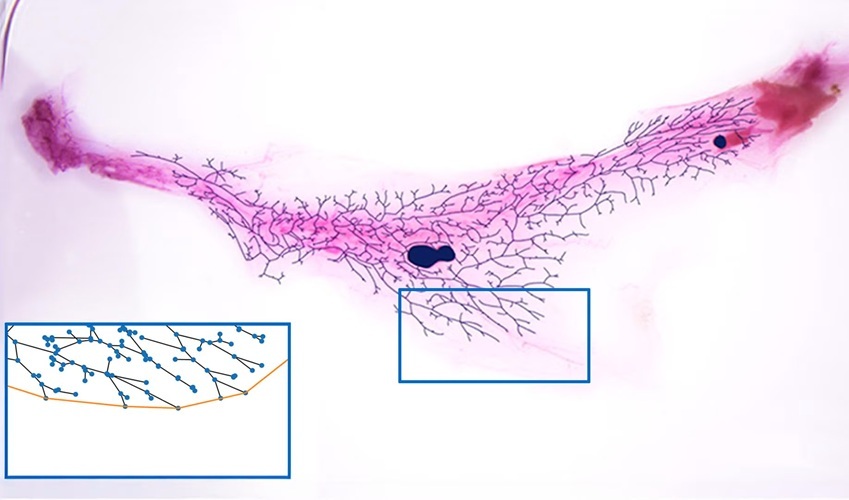
Automated Tool Detects Early Warning Signs of Breast Cancer
Branching is a vital biological process that enables organs like the lungs, kidneys, and breasts to perform complex functions. In female mammary glands, most branching occurs after birth—during puberty... Read more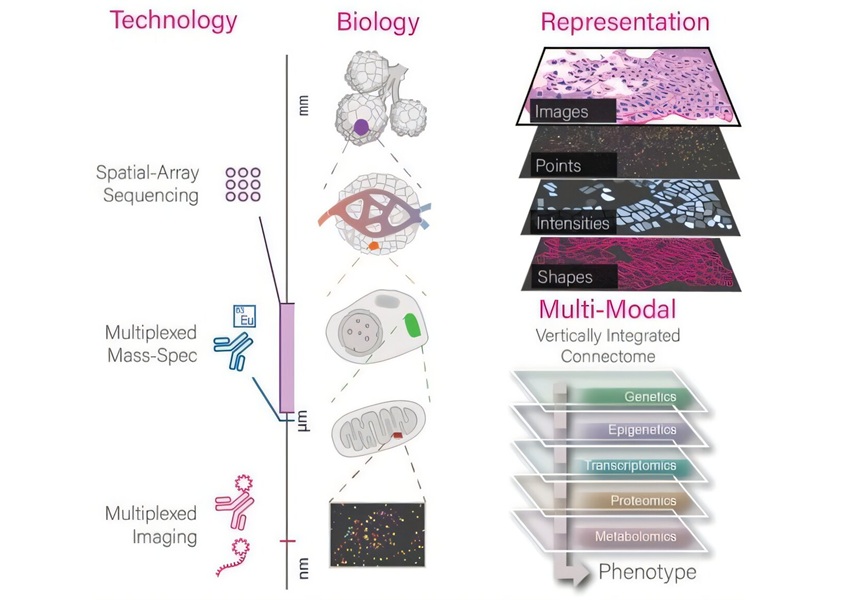
New Software Tool Improves Analysis of Complex Spatial Data from Tissues
Advances in spatial omics have enabled scientists to map the distribution of RNA and proteins within intact tissues, offering powerful insights into how cells behave and interact in both health and disease.... Read more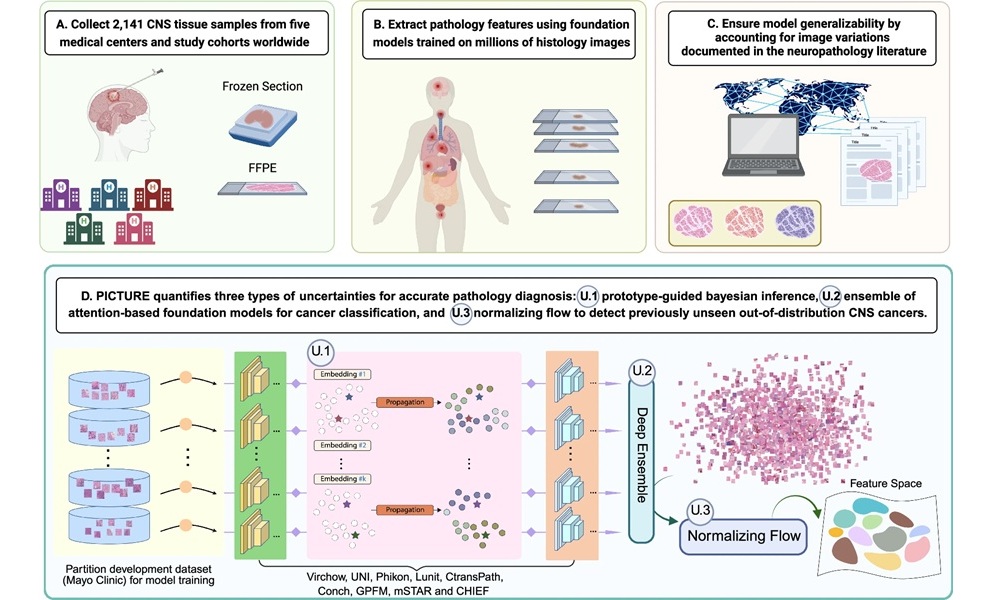
AI Tool Helps Surgeons Distinguish Aggressive Glioblastoma from Other Brain Cancers in Real-Time
Accurately distinguishing between brain tumors during surgery is one of the toughest diagnostic challenges in neuro-oncology. Glioblastoma, the most common and aggressive brain tumor, often appears similar... Read moreTechnology
view channel
Taste-Based Influenza Test Could Replace Nasal Swabs with Chewing Gum
Influenza is one of the most dangerous infectious diseases worldwide, claiming around half a million lives each year. What makes it particularly insidious is that flu viruses are contagious even before... Read more
3D Micro-Printed Sensors to Advance On-Chip Biosensing for Early Disease Detection
Early-stage disease diagnosis depends on the ability to detect biomarkers with exceptional sensitivity and precision. However, traditional biosensing technologies struggle with achieving this at the micro-scale,... Read moreIndustry
view channel
Revvity and Sanofi Collaborate on Program to Revolutionize Early Detection of Type 1 Diabetes
Type 1 diabetes (T1D) is a lifelong autoimmune condition in which the immune system destroys the pancreas’s insulin-producing beta cells, leading to dependence on insulin therapy. Early detection is critical... Read more








 (3) (1).png)






